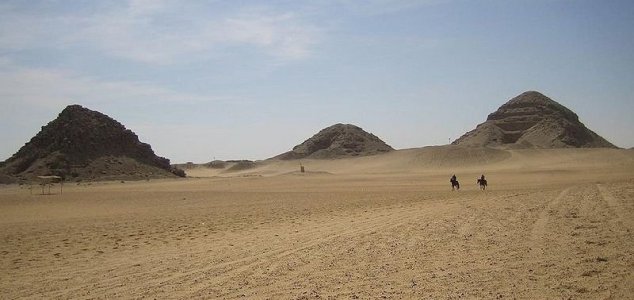Archaeology & History
January 16, 2014 · 35 comments
35 comments

What secrets still remain buried under the sand ? Image Credit: CC BY-SA 2.0 Axel Seedorff
Thought to have ruled at the beginning of the 13th Paranoiac dynasty, King Seneb Kay led his people for more than four-and-a-half years. Archaeologists were able to decipher hieroglyphics inscribed on the walls to learn who the tomb had belonged to.
"This adds to our pharaonic history, and sheds light on an era about which we knew very little previously," said Head of Antiquities Ali al-Asfar. "He was originally mummified but his body was pulled apart by ancient tomb robbers."
The tomb's discovery follows that of an ancient Egyptian brewer that was discovered on the west bank of the Nile earlier this month.
Source: IB Times | Comments (35)
Lost tomb of Egypt's King Seneb discovered
By T.K. RandallJanuary 16, 2014 ·
 35 comments
35 comments
What secrets still remain buried under the sand ? Image Credit: CC BY-SA 2.0 Axel Seedorff
The pharaoh is believed to have enjoyed the longest rule of his time more than 3,600 years ago.
The tomb, which dates back to 1650 BC, was found near the city of Sohag around 300 miles to the south of Cairo. The pharaoh's skeleton was found intact within a wooden sarcophagus but looters are believed to have taken most of the other items of value long ago.Thought to have ruled at the beginning of the 13th Paranoiac dynasty, King Seneb Kay led his people for more than four-and-a-half years. Archaeologists were able to decipher hieroglyphics inscribed on the walls to learn who the tomb had belonged to.
The tomb's discovery follows that of an ancient Egyptian brewer that was discovered on the west bank of the Nile earlier this month.
Source: IB Times | Comments (35)

The Unexplained Mysteries
Book of Weird News
AVAILABLE NOW
Take a walk on the weird side with this compilation of some of the weirdest stories ever to grace the pages of a newspaper.
Click here to learn more

Support us on Patreon
BONUS CONTENTFor less than the cost of a cup of coffee, you can gain access to a wide range of exclusive perks including our popular 'Lost Ghost Stories' series.
Click here to learn more
Spirituality, Religion and Beliefs
Ancient Mysteries and Alternative History
United States and the Americas
Extraterrestrial Life and The UFO Phenomenon
Total Posts: 7,780,247 Topics: 325,683 Members: 203,957
Not a member yet ? Click here to join - registration is free and only takes a moment!
Not a member yet ? Click here to join - registration is free and only takes a moment!




































Please Login or Register to post a comment.